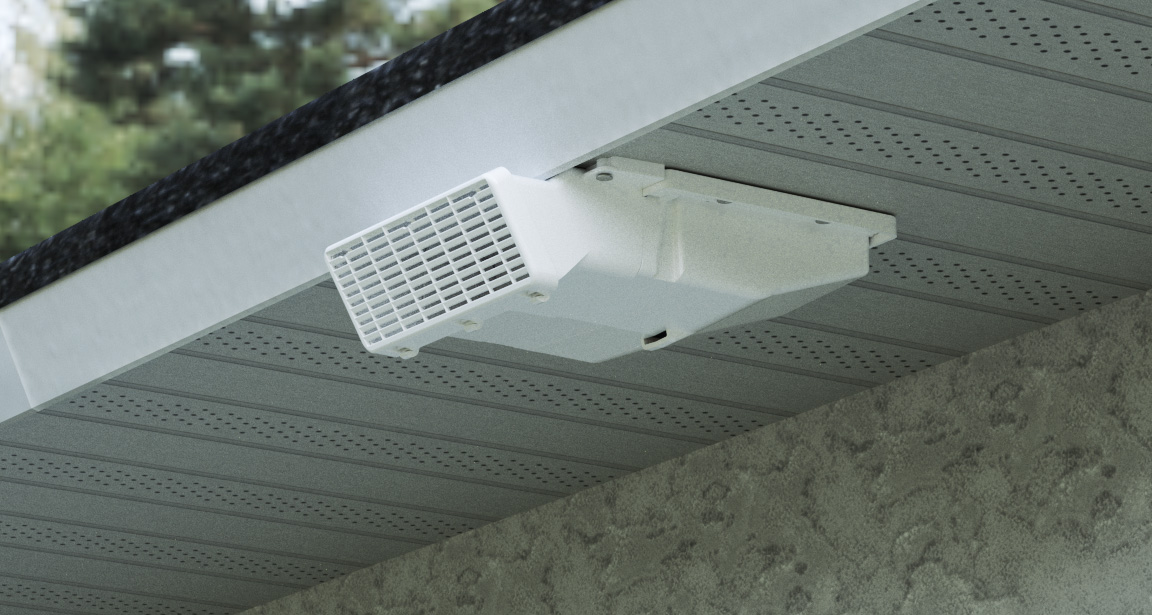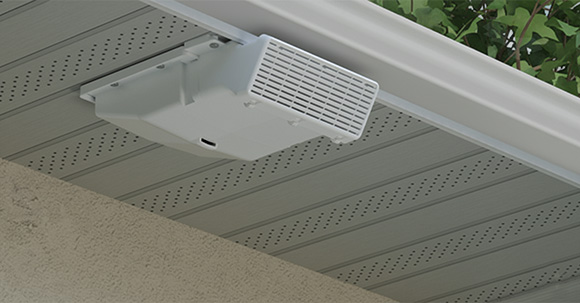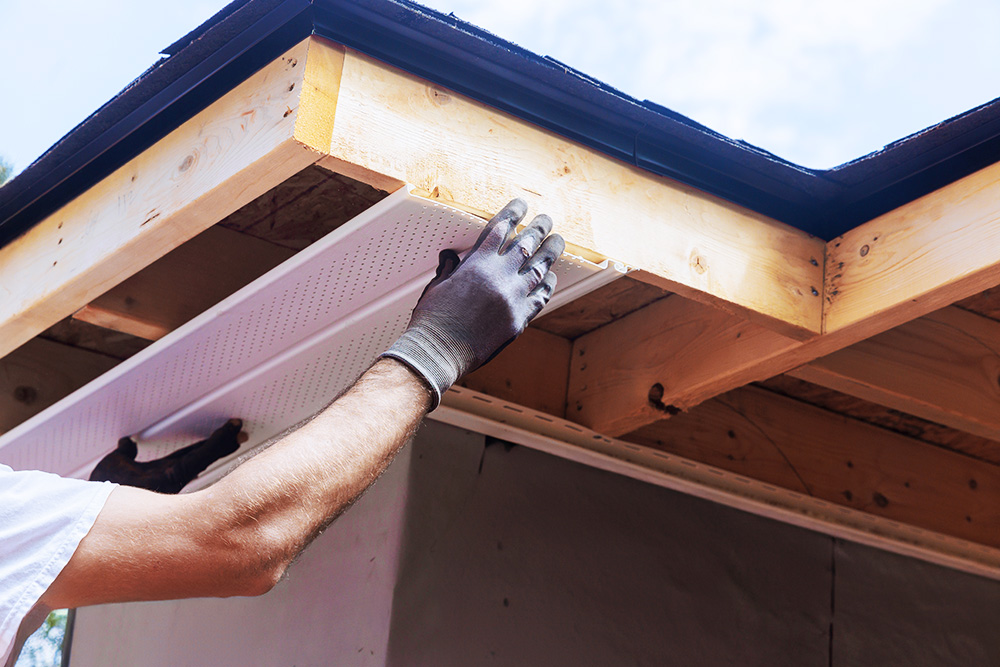Help Protect Attics From Dangerous Mold & Mildew
Standard soffit vents dump humid air right where passive intake vents pull it back into the attic. SoffitFlow's patented design extends beyond the roofline, breaking the recirculation cycle that creates callback complaints and warranty issues.
Quick Links:
Find Distribution Partners | Download Technical SpecsThe physics are working against traditional installations. Hot, humid air exits the vent in a downward trajectory, then rises naturally through the same passive soffit vents required for attic ventilation. This recirculation creates ideal conditions for mold growth.
Choose the SoffitFlow for a smart design solution to this common problem.
The Tailpipe Principle
Vehicle exhaust systems don't terminate under the engine bay because engineers understand airflow dynamics. SoffitFlow applies this same principle to residential exhaust systems, extending the termination point beyond the fascia to prevent recirculation.
Performance Engineering
SoffitFlow's design addresses the fundamental flaw in traditional soffit terminations. The precision-positioned 4-inch collar works with a V-shaped tapered bottom panel to maximize airflow velocity. The extended nose projects beyond the fascia line, creating a positive pressure zone that prevents humid air from deflecting back toward intake vents. The integrated gravity-assist damper operates at 50+ CFM—compatible with standard residential bath fans. An engineered weep hole prevents condensation accumulation, while the hinged wildlife grill provides maintenance access without compromising performance.
Built for Professional Installation Standards
High-density polyethylene (HDPE) construction provides superior performance across temperature extremes from -40°F to 150°F. Unlike standard ABS or PVC terminations, HDPE maintains structural integrity through thermal cycling while resisting UV degradation and chemical exposure from industrial cleaning products. The material's low moisture absorption rate makes it ideal for coastal and high-humidity applications where traditional materials fail. HDPE's thermal stability prevents damper warping, ensuring consistent operation throughout the product lifecycle.
Installation Requirements
Standard 4-inch ductwork compatibility streamlines integration with existing rough-in procedures. The unit requires support beam attachment at a minimum of two locations to prevent soffit sagging on lighter metal soffits. For installations with tight roof pitches, RigiFlex181 flexible ductwork provides optimal routing solutions. The five-step installation process integrates seamlessly with standard construction schedules, using common tools familiar to HVAC and general contractors.
 Competitive Advantage
Competitive AdvantageOffering SoffitFlow positions you as a technical expert who understands building science, not just installation mechanics. This expertise justifies premium pricing and builds long-term relationships based on performance rather than price.
Installation Efficiency
The streamlined installation process reduces labor time while improving outcome reliability. Standard tools and techniques mean no additional training requirements for installation crews. Clear documentation and video resources minimize job site confusion and rework.
 Quality Assurance
Quality AssuranceMade in USA manufacturing ensures consistent quality and availability. The robust construction eliminates common failure modes like cracked housings, warped dampers, and wildlife intrusion that create callback situations.
Select a Smart Solution to Highlight Quality Commitment
SoffitFlow transforms bathroom exhaust from a commodity installation into a technical differentiator. When others are installing standard soffit vents, you're providing engineered solutions that prevent callbacks and build reputation.



